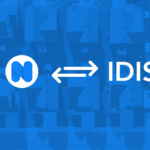
The U.S. Department of Housing and Urban Development has announced its eagerly anticipated FY 2025 formula allocations, providing crucial funding for community development and housing initiatives nationwide. With $5.56 billion distributed across six key programs, these allocations will impact thousands of communities and millions of residents in the coming year.
This annual allocation process is a critical funding mechanism for states, counties, cities, and local organizations working to address housing needs, homelessness, and community development priorities across the country. Here’s what housing and community development professionals need to understand about this year’s funding landscape.
Two-Year Funding Trends
Looking at the two-year trend for HUD’s formula allocations reveals relative stability in overall funding levels:
- Consistent Support: CDBG and ESG program funding has remained steady over the past two fiscal years, demonstrating continued federal commitment to community development and homelessness services.
- HOME Program: The modest $40 million reduction in HOME funding from FY 2024 ($1.30 billion) to FY 2025 ($1.26 billion) represents a 3% decrease, following a more substantial $200 million reduction from FY 2023 to FY 2024. This two-year trend indicates gradual adjustments to affordable housing development support.
- HOPWA Program: This program has seen marginal increases over two years, with a $5 million increase from FY 2023 to FY 2024, and an additional $500,000 in FY 2025, reflecting ongoing attention to housing needs for persons living with HIV/AIDS.
- Housing Trust Fund: After a significant decrease from $382 million in FY 2023 to $214 million in FY 2024 (a 44% reduction), the HTF saw a modest recovery to $223 million in FY 2025, representing a 4.2% increase. The substantial fluctuation reflects the program’s funding mechanism tied to Fannie Mae and Freddie Mac revenues.
- Recovery Housing Program: RHP funding has maintained consistent levels at $30 million annually from FY 2023 through FY 2025, demonstrating stable federal support for housing initiatives serving individuals in recovery from substance use disorders.
The consistency in funding levels across major programs suggests a stabilization of federal investment in community development and housing, following more significant fluctuations in previous budget cycles.
Breaking Down the Numbers: FY 2025 vs. FY 2024
For FY 2025, HUD has allocated a total of $5,555,768,781 across six key formula programs, maintaining relatively stable funding levels compared to FY 2024:
| Program | FY 2024 Allocation | FY 2025 Allocation | Change |
| Community Development Block Grants (CDBG) | $3.30 billion | $3.30 billion | No change |
| HOME Investment Partnerships Program | $1.30 billion | $1.26 billion | -$40 million |
| Housing Opportunities for Persons With AIDS (HOPWA) | $454 million | $454.5 million | +$0.5 million |
| Emergency Solutions Grants (ESG) | $290 million | $290 million | No change |
| Housing Trust Fund (HTF) | $214 million | $223.1 million | +$9.1 million |
| Recovery Housing Program (RHP) | $30 million | $30 million | No change |
This funding distribution represents a continuation of the federal government’s commitment to community development, with CDBG maintaining its position as the largest allocation (59.4% of total funding), followed by HOME (22.7%), HOPWA (8.2%), ESG (5.2%), HTF (4.0%), and RHP (0.5%).
Notably, the HOME program has seen a modest decrease of approximately $40 million from FY 2024, while HOPWA received a slight increase of $500,000. CDBG and ESG funding levels remained unchanged from the previous fiscal year.
These allocations reflect the funding levels approved in the FY 2025 budget for HUD, including approved reallocated funds for the CDBG and HOME programs.
State-by-State Distribution and Top Recipients
The five states receiving the largest total formula allocations are California ($645.4 million), New York ($532.9 million), Texas ($415.7 million), Florida ($294.0 million), and Pennsylvania ($276.3 million). These five states alone account for approximately 39% of the total national allocation.
Distribution patterns remain consistent with previous years, with major urban centers receiving significant portions of program funding:
- CDBG Program: Top recipients include New York City ($170.2 million), Chicago ($74.5 million), and the State of Texas ($71.2 million)
- HOME Program: New York City ($66.5 million), State of California ($36.6 million), and State of Texas ($33.0 million) lead allocations
- HOPWA Program: New York City ($44.9 million), Los Angeles ($24.2 million), and Atlanta ($15.4 million) received the largest grants
- ESG Program: New York City ($15.1 million), State of California ($12.3 million), and State of Texas ($10.3 million) top the list
HTF Program
The Housing Trust Fund, which supports affordable housing for extremely low-income households, allocated its largest grants to:
- State of California: $23.4 million
- State of New York: $14.3 million
- State of Texas: $9.6 million
RHP Program
The Recovery Housing Program, which supports housing for individuals in recovery from substance use disorders, directed its largest allocations to:
- State of West Virginia: $2.2 million
- District of Columbia: $1.6 million
- State of Louisiana: $1.5 million
Allocation by Grantee Type
HUD distributes funds across different types of grantees:
- Principal Cities: $2.30 billion (602 grantees)
- Non-entitlement Areas (typically states distributing to smaller communities): $2.01 billion (52 grantees)
- Urban Counties: $835.8 million (198 grantees)
- Metropolitan Cities: $382.3 million (420 grantees)
- Consortia: $11.9 million (17 grantees)
- Insular Areas: $10.1 million (4 grantees)
- Hawaii Counties: $5.8 million (3 grantees)
Understanding the Formula Allocation Process
HUD’s allocation formulas distribute funds objectively based on community needs, using data points that remain consistent year to year. The CDBG formula considers population, poverty levels, housing age, overcrowding, and growth lag, while other programs evaluate factors specific to their missions – such as rental housing needs (HOME), homelessness data (ESG), HIV/AIDS statistics (HOPWA), and extremely low-income housing shortages (HTF). This data-driven approach ensures communities with the greatest demonstrated needs receive proportional support while providing grantees with predictability for planning purposes.
Impact on Communities
These allocations ensure continued support for critical housing and community development initiatives nationwide. The stability in funding for CDBG and ESG programs from FY 2024 to FY 2025 allows communities to maintain continuity in existing projects, while the modest adjustment in HOME funding requires minimal replanning. Together, these resources will support affordable housing development, homelessness prevention, infrastructure improvements, economic initiatives, and specialized housing assistance. As emphasized in previous allocation announcements, this funding reinforces the importance of “a coordinated whole-of-community approach” to building resilient communities and expanding opportunities for low-income households.
Looking Forward: Implications for Housing and Community Development
The FY 2025 allocation reflects a stabilizing approach to federal support for community development and housing programs following several years of fluctuations. Communities can use these allocations to continue building upon existing initiatives while making strategic adjustments where necessary:
- CDBG Program: With funding maintained at $3.3 billion, communities can continue implementing planned community development initiatives without significant disruption.
- HOME Program: The modest 3% reduction ($40 million) in HOME funding follows a larger reduction in the previous fiscal year. This may require some grantees to prioritize projects more carefully, but represents a smaller adjustment compared to prior year changes.
- ESG and HOPWA Programs: The stability in ESG funding and slight increase in HOPWA support continued delivery of critical services to vulnerable populations.
- HTF and RHP Programs: These specialized programs continue to address specific needs in extremely low-income housing and recovery housing.
Accessing Full Allocation Information
The complete list of grantee allocations is available through HUD’s Office of Community Planning and Development. Communities can access their specific allocation amounts and program details on the HUD website’s official announcement.
Neighborly Software: Supporting HUD Grant Management Nationwide
As the market leader in HUD grant management solutions, Neighborly Software is proud to support our community of over 700 neighbors (clients) who rely on our platform to manage $14.7 billion in funding across nearly 4,000 projects. Our comprehensive software solutions help housing authorities, local governments, and community development organizations efficiently administer programs that serve 7.4 million applicants nationwide. We remain committed to providing the tools and support that empower our neighbors to maximize the impact of these critical HUD allocations in their communities.
For more information about HUD’s Community Planning and Development formula programs and allocation process, visit the Community Planning and Development Formula Program Allocations for FY 2025 page on HUD.gov.







